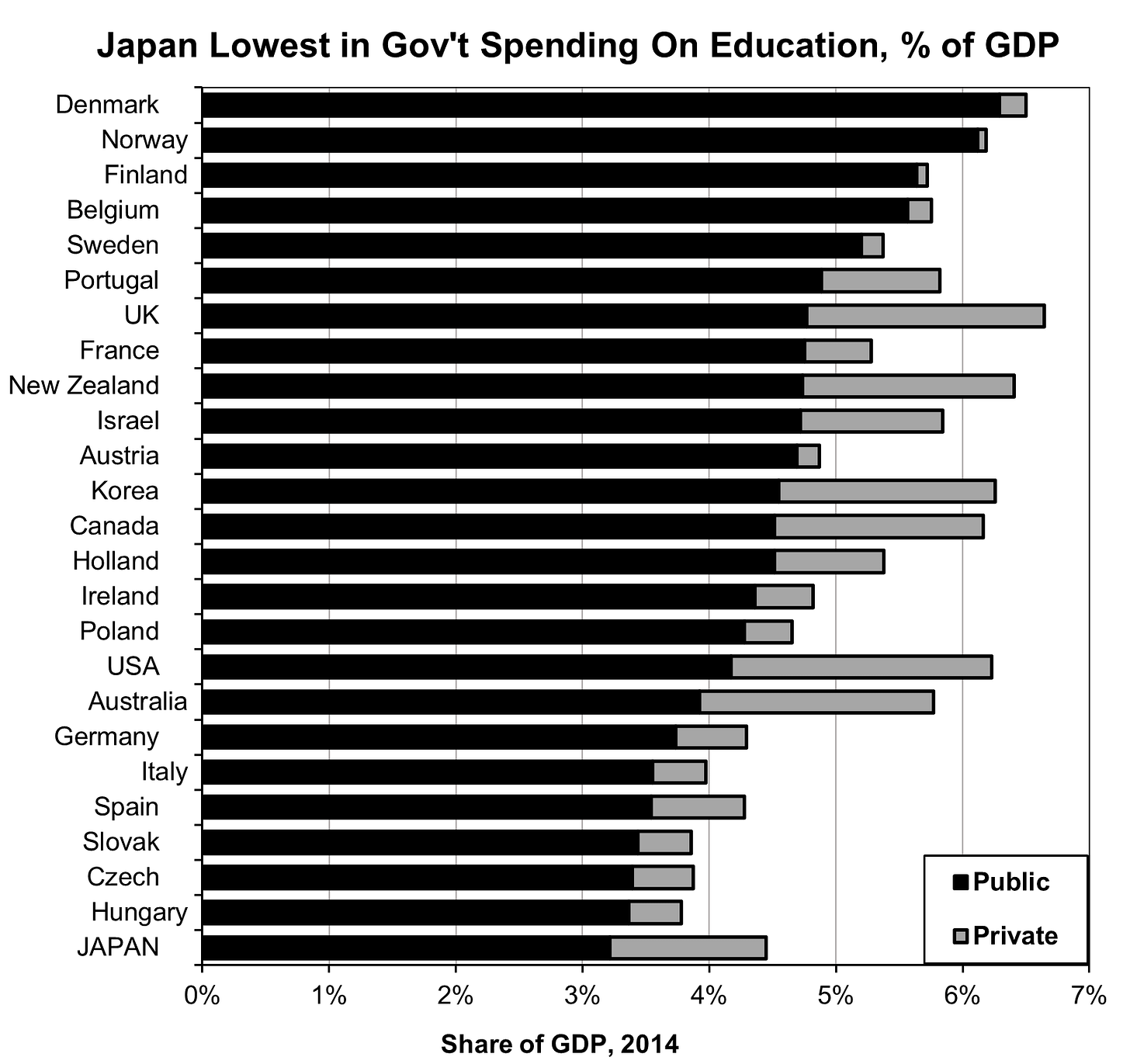Fixing Inequality Can Boost Japan's Growth
Some Modest Proposals
The East Asia Forum ran an abridged version of an October article by me in Toyo Keizai. I’m sending out this post for the many of you who joined the blog since then. There are good and bad ways to try to promote income equality. If done right it could not only boost living standards but overall growth. As the OECD pointed out, Japan’s deepening inequality during 1990-2010 (latest available) made a bad situation even worse. Had inequality not intensified, per capita GDP would have grown about 25 per cent faster at 0.9% per year instead of the experienced 0.73%. This would have left GDP per capita in 2010 about $1,200 higher, or almost $3,000 higher for the average household of 2.5 people.
One of the most shocking figures is that, among rich countries, the Japanese government spends the lowest amount of money on education as a percentage of GDP (see figure above). That includes all grades from primary school through college. As a result, far fewer of Japan’s lower and middle-class youth, even those with good grades, get to graduate from college (see chart below). How can Japan advance without investing more in its main resource: the skills of its people?
The EAF abridgement includes many measures that can simultaneously improve equality and boost growth. It also provides a link to the longer pieces in both English and Japanese.
See https://www.eastasiaforum.org/2021/11/26/fixing-inequality-can-boost-japanese-growth/


Alarming however not surprising! As a graduate student, I had noticed this first hand. To present some facts, annually 600,000 fresh graduates enter the job market and for their selection, academic skills or university background carries little relevance to the job! The "real education" of an employee is said to begin after entering the job!
Govt hardly spends resources is providing cutting-egde skills and knowledge unfortunately *perhaps* because its feels its not their duty to do so and maybe corporate would do it!